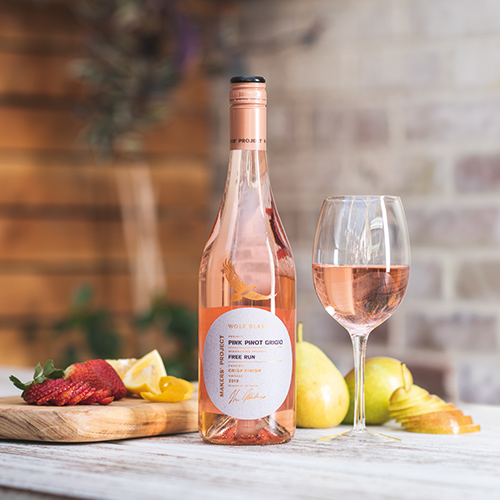Does pinot gris need to be clear?

Maybe it’s just me, but I find that pinot gris is one of those varietals that in a blind tasting or wine options game is harder to pick than a broken nose! Unlike riesling and semillon, there just aren’t the abundant tell-tale markers that reveal its identity. To add to the pinot gris confusion, you then have to deal with stylistic nuances when the same grape is used to make pinot grigio in a more Italian style. To my palate it’s like a chameleon: seemingly changing its character from vintage to vintage and bottle to bottle. But it’s not just a blind tasting that makes it difficult to pick, the pinot gris pretender can also come in many different colours making it a rival to Pistachio Disguisey as the master of disguise!
Although pinot gris is believed to be a mutation of pinot noir that originated in France, the same grape is called pinot grigio in Italy where it makes a typically dry style of white wine which is usually quite high in acidity. Around the wine-making world it’s made in divergent styles and given different monikers – such as Fromentau in Languedoc, Auxerrois Gris in Alsace, Monemvasia in Greece, and Grauburgunder in Germany – to name just a few. In the vineyard, the bunches of fruit can have differing appearances though they’re generally greyish blue or even light purple to pinkish. But at the end of the day, the grape was called pinot “gris” because of its generally greyish tinges.
As a table wine, pinot gris can offer something for almost every palate preference. Those from cooler climates will often have a zesty citric backbone and oodles of acidity, while warmer climates produce wines with stone fruit and sometimes honeydew characters. But what I have often been surprised by is the difference that some “colour” can have on mouthfeel. Although less common in Australia, pinot gris can have a coppery or golden appearance in what is termed “romato”. At other times, the wine can have a blush-like appearance reminiscent of a rose – and there are many variations in between. But no matter what the hue, there’s no doubt that pinot gris of colour have a lot to offer in terms of weight, texture and taste.
The “colour” is simply a product of skin contact (called “maceration”) in which the juice is allowed to remain on skins for a period of time – usually less than 24 hours. This allows the transfer of the colour, flavour and tannins from the skins to influence the juice used to create the wine. These are undoubtedly the styles of pinot gris that I find more palate pleasing!
In case the style is of interest, here are a few domestic pinot gris of “colour” that are worth looking out for:
- Arbor Novae (by Howard Park) 2020 $30 – the slightest of pink edges in the glass adds mouthfeel and texture to a wine that is packed with steely acids, citrus, spice and a hint of quince. Delightful!;
- Wolf Blass Makers Project Pink $20 – distinctly pink in the glass showing pears, pink lady apple and enough citrus and acid to balance it out nicely; and
- Moorooduc Pinot Gris on Skins 2019 $39 – pet project of winemaker Kate McIntyre – fuller bodied and more like a pinot noir, but a wine that is testing the traditional boundaries.
With so many variations in style, pinot gris (grigio) is far from a one trick pony. While I might struggle to pick it in a blind lineup, it’s a varietal that rewards the adventurous and pleases palates around the globe – and even more so when it pours with a splash of colour!